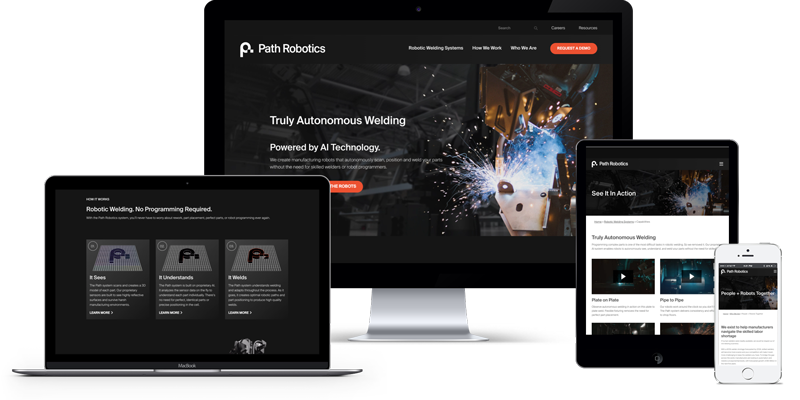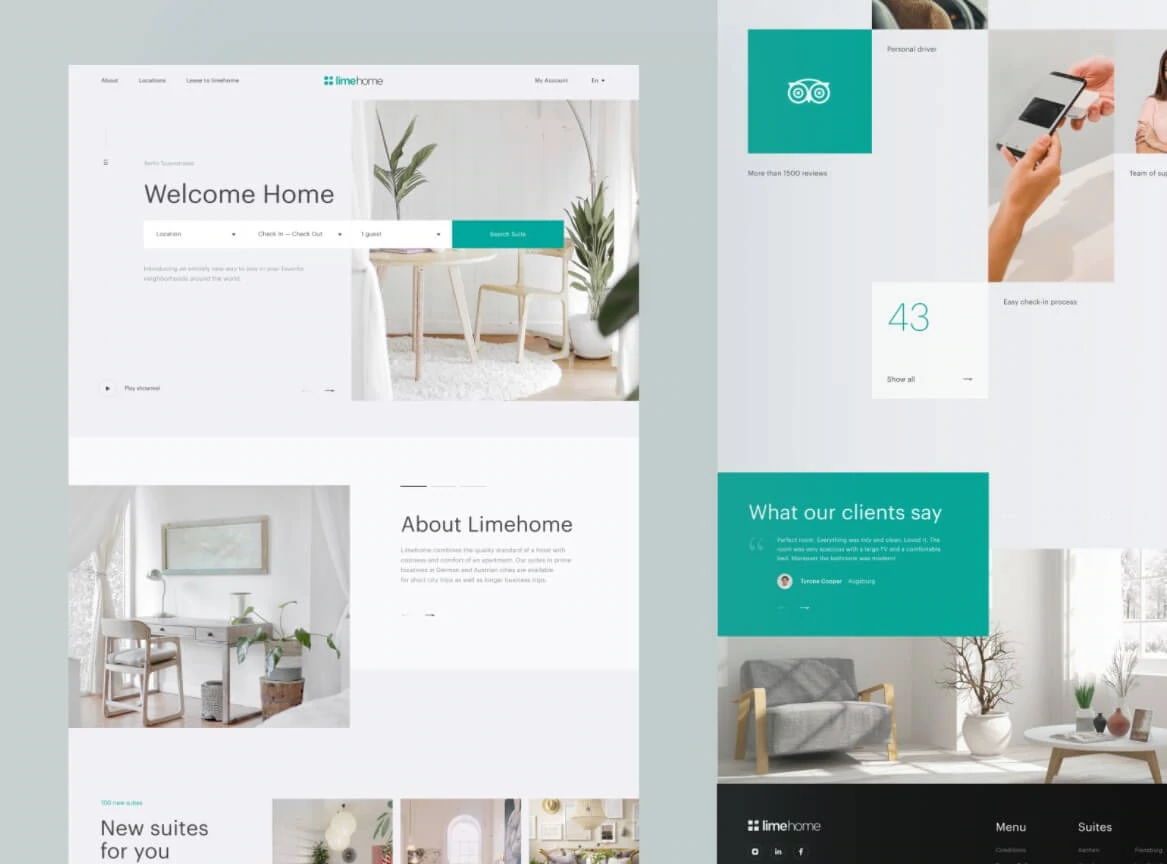Key Elements That Make an Effective Website Design Stand Out
Key Elements That Make an Effective Website Design Stand Out
Blog Article
Make The Most Of Involvement: Proven Techniques for Outstanding Website Layout
In a significantly digital landscape, the importance of a user-centric approach to site style can not be overstated. Recognizing just how efficient navigation, aesthetic power structure, and material optimization assemble to boost individual involvement is vital for any kind of company seeking to make a meaningful impact. As we explore numerous tested techniques that add to exceptional web site layout, the interaction in between these components exposes not just best practices but also innovative techniques that can boost user experience. What may shock you is exactly how simple adjustments can lead to amazing makeovers in interaction metrics.
Relevance of User-Centric Style
User-centric layout is crucial in producing reliable web sites, as it prioritizes the needs and preferences of completion user from the very start of the design procedure (website design). This technique guarantees that the website is customized to supply an ideal experience for individuals, facilitating engagement and complete satisfaction. By understanding customer actions, goals, and pain factors, developers can develop interfaces that reverberate with their target audience and promote a sense of connection
Applying user-centric style involves substantial study, including user characters and trip mapping, which help in recognizing the details needs of various individual segments. This data-driven method enables informed choices pertaining to performance, web content, and design, inevitably causing the creation of an extra intuitive and enticing internet experience.
In a competitive electronic landscape, prioritizing user-centric style is not merely advantageous; it is vital for driving interaction, lowering bounce rates, and cultivating customer loyalty. Effective web sites are those that resonate with customers, making user-centric design an essential principle for effective web development.
Reliable Navigating Techniques
A well-structured navigating system is a cornerstone of efficient internet site design, constructing directly on the concepts of user-centric design. Effective navigation permits users to locate details swiftly and with ease, enhancing their total experience and motivating longer check outs.
To achieve this, consider applying a clear power structure in your navigating food selection. Main classifications must be immediately noticeable, while subcategories can be exposed with dropdowns or expanding food selections. This company assists individuals prepare for where they might discover relevant web content, reducing frustration.

Uniformity is vital; use acquainted terminology and design elements throughout the site to avoid complication. Breadcrumb tracks can likewise be valuable, supplying users with contextual understanding of their location within the website and enabling easy backtracking.
Last but not least, make certain that your navigating is mobile-friendly and receptive. As more customers access web sites through smart phones, adapting your navigation for smaller sized screens is necessary for keeping use and availability. By prioritizing these approaches, you can produce a smooth navigating experience that keeps individuals involved.
Visual Power Structure and Format
Establishing a clear visual power structure is vital for leading individuals via an internet site's material effectively. A well-structured format not only improves customer experience yet additionally affects just how site visitors engage and perceive with info. By purposefully utilizing dimension, spacing, shade, and comparison, designers can develop prime focus that accentuate one of the most vital aspects, such as headlines, contacts us to action, or photos.
Including a grid system can additionally improve visual hierarchy by offering a regular framework for web content placement. This organization allows individuals to browse the website without effort, making it less complicated to digest info (website design). Furthermore, making use of whitespace is important; it develops breathing space around elements, lowering cognitive overload and emphasizing crucial web content

Web Content Optimization Methods
While producing visually appealing designs is essential, the efficiency of a website eventually hinges on how well its content is optimized for both online search engine and individual involvement. Material optimization entails a calculated approach that boosts exposure and importance, ultimately driving website traffic and maintaining visitors.
First, keyword research is fundamental. Determining relevant search phrases that align with user intent permits the assimilation of these terms naturally into headings, text, and meta summaries. This not just helps in ranking greater on online search engine however also enhances the clearness of web content for customers.

Furthermore, optimizing for neighborhood SEO can increase interaction for region-specific audiences. Integrating local keywords and creating material that addresses neighborhood interests boosts relevance.
Finally, regularly updating material makes sure that it continues to be beneficial and fresh, appealing to both internet search engine and returning customers. By concentrating on these material optimization techniques, companies can produce a compelling on the internet existence that cultivates interaction and drives conversions.
Responsive and Mobile-First Approaches
Individual engagement and material exposure are progressively influenced by the capacity of a website to adjust perfectly across numerous gadgets. With the rise of mobile surfing, employing responsive design and mobile-first methods has ended up being essential for effective internet growth. Responsive style ensures that a single web site format adjusts fluidly to various display sizes, from desktops to smart devices, thus providing a consistent user experience.
On the other hand, a mobile-first strategy focuses on the mobile user experience during the layout process. Deliberately for smaller sized screens initially, designers can useful link focus on necessary attributes and boost efficiency, making certain that individuals are not bewildered by unneeded material. This strategy also improves loading times, which is vital for maintaining site visitors.
Both approaches add to greater engagement rates, as users are a lot more likely to communicate with a site that is straightforward and visually enticing. Search engines prefer mobile-optimized websites in rankings, thus enhancing visibility. In summary, embracing receptive and mobile-first layout methods is crucial for optimizing customer involvement and making sure that content continues to be obtainable and efficient across all tools.
Final Thought
Reliable navigating techniques, a distinct visual hierarchy, and optimization of material significantly boost user experience. Jointly, these strategies not just facilitate information access but likewise foster much deeper user interaction, ultimately contributing to higher engagement rates and overall site success.
As we explore numerous tested strategies that add to exceptional website design, the interplay between these elements exposes not only ideal techniques but also ingenious methods that can raise individual experience.User-centric layout is important in producing reliable websites, as it prioritizes the demands and choices of the end individual from the actual start of the layout procedure. Reliable sites are those that reverberate with customers, making user-centric design a fundamental principle for effective internet development.
Receptive design guarantees that a solitary site design readjusts fluidly to various display dimensions, from desktop computers to smartphones, therefore supplying a constant individual experience.
In recap, taking on receptive and mobile-first layout methods is crucial for making the most of individual interaction and guaranteeing that web content continues to be obtainable and reliable across all devices.
Report this page